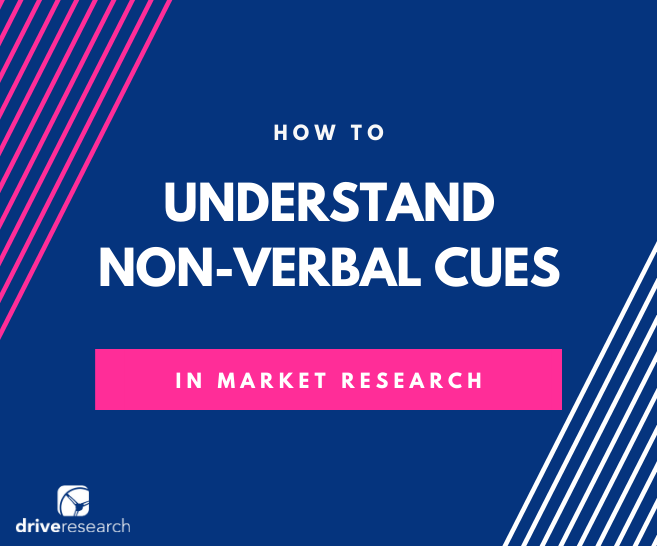Market research is an essential piece of the marketing and strategy process for any organization. Gaining insight about consumer needs, opinions, and preferences can be a key component in both the short-term and long-term success of a product or service. Essentially, it's vital.
There are a multitude of ways market research can be conducted. Common in-person methods include focus groups and 1:1 interviews. During this process, the researcher will ask a series of questions in order to learn more about participant experiences, needs, opinions, and preferences. The responses are compiled and analyzed in order to better understand the ideal consumer, identify opportunity in the marketplace, minimize risk, and plan ahead.
You may believe market research follows a specific path:
- Question
- Answer
- Analysis
However, this can be a common misconception. Beyond just the spoken words, feedback, and responses, there is much more to the process you could be missing unless you are keenly aware of non-verbal cues and communication.

Understanding non-verbal communication in market research is arguably as important as analyzing and interpreting the spoken word.
Nonverbal cues can be just as valuable as the words spoken.
In the psychology field, observing an individual’s behavior (when they are aware) is classified as undisguised observation, which would include focus groups and 1:1 interviews due to the fact the participant is aware research is being conducted and is a willingly taking part.
Nonverbal cues during one-to-one or one-to-many interactions can include facial expressions and body language, and can provide valuable insight to the researcher that is unrelated to the participant’s spoken words.
Facial expressions
There are many emotions that can be expressed through facial expressions, but the 6 basic emotions are identified as: (1) anger, (2) disgust, (3) fear, (4) happiness, (5) sadness, and (6) surprise.
Think about different situations you have personally experienced. Have you been conversing with a friend and simply by their facial expressions you could tell what kind of mood they were in? Have you been in a meeting and due to facial expressions of attendees you were able to tell who was interested and who was bored, maybe or who was excited to be there and who was itching for it to be over? The answer is likely, YES.
When conducting market research, facial expressions can give the researcher insight into the participant’s mood as well. At the end of the day many methodologies in market research are based on simple human-to-human interactions.
Eyes and lips
When a person looks directly into your eyes, it can indicate they are interested and you have their full attention. During market research, it can indicate they are actively listening and answering the questions to the best of their ability.
According to Dr. Lillian Glass, behavioral analyst and body language expert, when people lie it is common for them to break eye contact, blink excessively, or appear to have a blank stare gaze. These are signs to a researcher that the participant may be uncomfortable, stressed or being dishonest with their responses to questions.
Pursed lips can indicate distaste or disapproval. As a researcher, noticing pursed lips when asked for an opinion about a product could mean distaste or disapproval without them even saying a word.
Lip biting can sometimes represent a sign of stress, and during market research it could indicate the participant is uncomfortable with the question or nervous about providing an honest answer.
When a participant covers his or her lips, it can be an sign that they do not want to answer that question, and according to Dr. Glass can also mean they are failing to reveal everything.
Torso and arms
Have you ever been on a date and had the other person cross their arms or face their body away from you? Did you get the feeling that he or she was just not that into you?
Well, in market research these nonverbal cues can mean the participant is closed off, frustrated, bored, or anxious. The participant needs to feel comfortable in a research setting in order to create a positive experience for them, as well as provide usable and insightful information for the researcher and ultimately the company.
This is why during an interview or focus group it is crucial to spend the opening minutes building rapport and making the respondent comfortable. You need to gain their trust immediately so they will open up to you later in the interview.
Noticing nonverbal cues will allow the researcher to adjust and adapt when needed, in order to maximize the participant experience and the results.
Legs
Moving legs excessively or tapping or shuffling of the feet can provide a nonverbal cue that the participant is anxious, nervous or uncomfortable. As a researcher, it may be helpful to check-in with the participant about their comfort level of the questions, or be cognitively aware the participant may not be responding completely truthfully.
This can prove more difficult during a web interview or if their legs are not visible during the conversation but it is certainly just one more verbal cue to be aware of during your market research process.
In Summary
Spoken data can provide valuable knowledge to a company and help them become a leader in their marketplace, but nonverbal behavior during focus groups and interviews can be just as valuable as the words the participants speak (or type!)
How observant are you with nonverbal cues? A great market researcher values every aspect of data collection, verbal and nonverbal. Although market research largely focuses on listening, listening, listening, I challenge you to start listening with your ears, and your eyes.
Contact Drive Research
Drive Research is a market research company located in Upstate, NY. Questions about how our team can assist you with your next survey, focus group, or project?
Contact us below.
Message us on our website
Email us at [email protected]
Call us at 888-725-DATA
Text us at 315-303-2040
